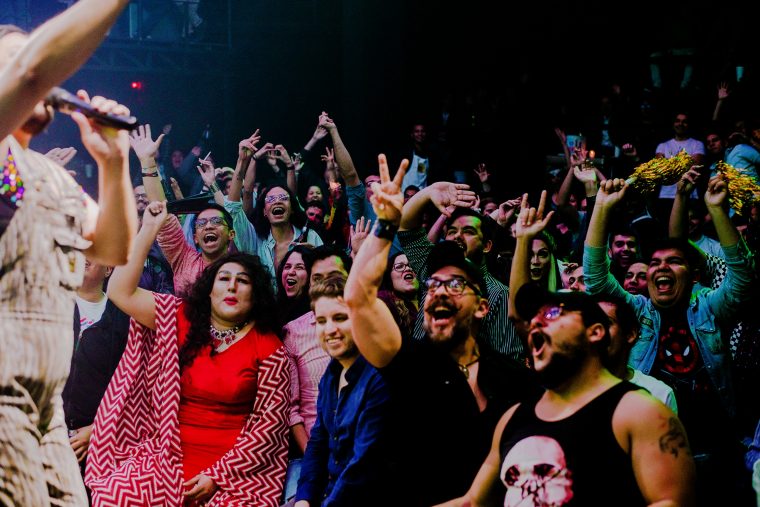Abstract
Drag involves so many uniques styles of fashion and performance. The United States has held a great foundation for the world of drag, but this concept can be found thriving throughout the entire world involving different characteristics and designs. This research looks at those characteristics and designs that are shown in different areas of the world and dives deeper into how drag artists from those areas feel about their drag.
China

https://www.billboard.com/articles/news/pride/7842105/rupaul-drag-race-global-impact-queens
In Patrick Crowley’s Billboard article, he surveyed multiple drag queens and kings from around the world and asked them how they would describe the drag scene from where they are from. From Beijing, China, he asked Tiger Lily how she would describe drag in Beijing. She said that the drag artists do not explicitly say that they are gay, since most of LGBTQs still are not comfortable enough to expose their identities and feel that they should hide them. The word she used was “polarized” because they do not have many options to perform. Adan Kohnhorst writes in his article that RuPaul’s fame on the internet has helped quite a bit for China’s LGBTQ community to become more ready to fully embrace drag. Kohnhorst’s focus of his article was about the biggest annual drag show located in Shanghai that is an outlet for many drag artists to “go all out.”
Mexico

https://remezcla.com/features/culture/monterreys-drag-scene/
In Ivan Mendiola’s 2017 article, he takes a look at Monterrey, Mexico and how its drag scene is becoming more appreciated and popular. The drag scene here only offered a couple venues hosting drag events but recently as drag has grown in popularity, an event called Regias del Drag has had a chance to thrive. This event is an entertaining drag competition and so far, there have been four seasons of Regias del Drag. This show has worked its magic in expressing the art of drag and opening people’s minds. On the contrary, Patrick Crowley interviewed a couple drag artists around Mexico, where the drag scene is a bit different than Monterrey. Mexico City has always been a bit more accepting of the drag scene and has had more to offer. Margaret Y Ya’s opinion on the drag scene is that it is a “fiesta.” She goes on to say that the diverse characters show off their color, spice, and flavor throughout the many styles of drag seen around the city. Another drag queen, Madison Basrey from Playa del Carmen, says that the drag scene is multicultural because of the tourists that come and “it is a parade of gays from all over the world.”
Brazil

In Patrick Crowley’s Billboard article, he interviewed Ikaro Kadoshi from São Paulo, Brazil. Ikaro says that the drag scene is unique because of the carnival influence adding art and rhythm to the gay community. Ikaro says that São Paulo has the biggest Pride event in the world. Carston Balzer’s 2005 article focuses on a different part of Brazil, Rio de Janeiro, where the first drag queens appeared in the clubs in 1993. The drag world from New York City had a huge influence on the Brazilian drag scene and the evolution of drag in Brazil. RuPaul even made an appearance in 1996 where he participated in the Rio carnival. Instead of calling this profession “drag,” drag queens in Rio de Janeiro perform a kind of “transformismo,” which means female impersonation. The international media hype, travelling drag queens, and the newly emerging club cultures have all had an immense impact on the evolution of Brazil’s drag queen scenes.
Australia

https://junkee.com/miss-verity-von-queef/176107
According to Gary Nunn’s 2018 article in Junkee, Australia’s youngest professional drag queen is 15 years old and goes by the name, Miss Verity Von Queef. Her family has always been supportive of her identity and her love for drag and performing has helped build her confidence. On the other hand, in Una Butorac’s article, not everyone is accepting of younger drag artists viewing the drag scene and being taught about it. The main issue is how young is too young to learn about identities and the drag world? The saying is “let kids be kids” but in the article, a children’s gender counsellor says that drag might help children explore their identity, which is a good thing. Pink Sasss, 10-year-old boy named Brierley Smith, says that Pink Sasss is just another part of him that makes him feel more comfortable. But he has not told many of his classmates about his other identity because he does not want to be teased.
It is interesting to learn about Drag outside the United States. It was easy to understand the dynamics of drag in relation to the United States. Obviously outside of the United States, cultural dynamics are much different. It is awesome to learn that drag is preformed in other countries in the world and it makes me want to do some research on this topic myself.
There were a couple of posts about international drag, and I’m so glad you included Brazil. The culture in Brazil lends itself so perfectly to drag, with the extravagance and flamboyance that is encouraged during Carnival. Yet, the culture for a long time made homosexuality and cross-dressing illegal, so realness was so key to not being arrested. I didn’t know that China was still so exclusionary, though. Your discussion about the Australian artist that is making people realize that socialization starts young and so does gender identity formation was excellently done.